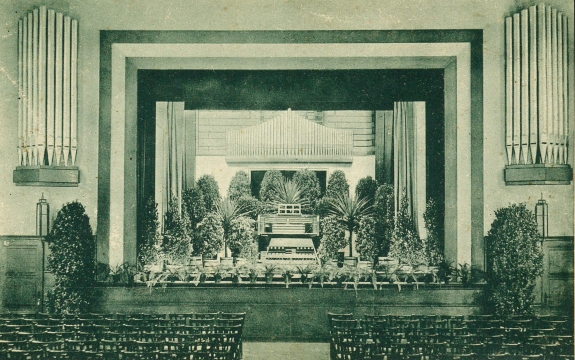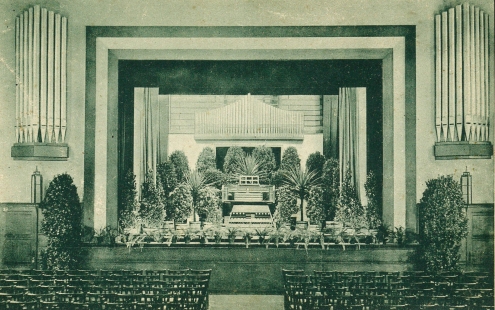The concert organ in the St. Paulus Workers' Clubhouse
The concert organ in the St. Paulus Workers' Clubhouse
In 1928, the St. Paulus Workers' Association was in its 55th year of existence. At the time, it had 1,264 members who held their regular meetings in the clubhouse in Wesemannstraße. Purchased by the parish of St George in 1886, the building had to be extensively renovated and rebuilt at the end of the 1920s.
However, the reopening on 15 January 1928 was not the end of the story. A house organ still had to be installed, which was completed a year later.
The instrument came from the workshop of the Dorsten master organ builder Franz Breil and comprised a total of 31 sounding stops with a selection of beautiful character stops, the effect of which could be precisely fanned out by a blind swell. The organ also had three keyboards and a three-part free pipe facade in the style of the modern era, without any special framing or decoration. In the opinion of one expert, the celesta would have been better placed outside the closed pipe room for better effect and not - as shown in the picture - inside the stage construction at the head of the large assembly hall.
30,000 marks were invested in the purchase at the time. The installation took several weeks. The inauguration and demonstration of the new concert organ took place on 20 January 1929 by Prelate Franz Richter of St. Georg. "Now - unusually for Bocholt - the royal instrument, which until then had only sung its sacred task in the church during services, stepped out into society", according to a music expert of the time.
He did not interpret this act as profanation of the instrument, because real music is never profane, "but in itself a celebration, a matter of higher existence" and particularly suitable for taking people out of their everyday lives.
Confiscated in 1935
The consecration ceremony was followed by a concert with the Essen organist Schuhmacher, a pupil of the Cologne cathedral organist Hans Bachem. The programme included works by the composers Bach, Frescobaldi, Böhm, Reger and Haas.
Subsequently, the organ was only used for seven years as part of the musical and social life of the association because the St. Paulus Workers' Association, like all others in the Münster administrative district, was dissolved on 16 September 1935 " on the basis of the Reich President's decree for the protection of the people and the state of 28 February 1933" and its assets were confiscated.




